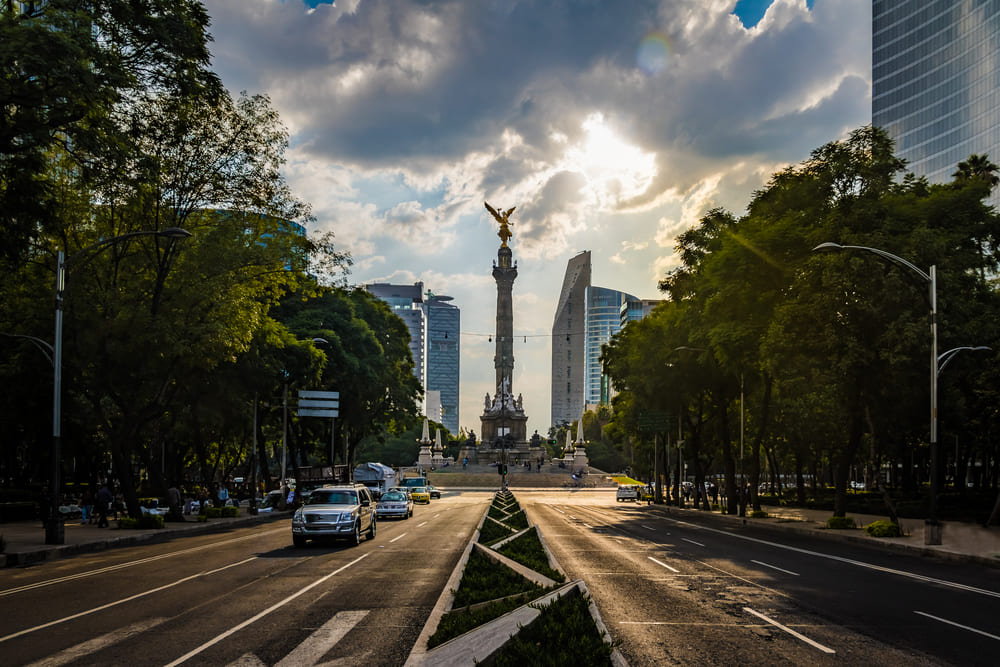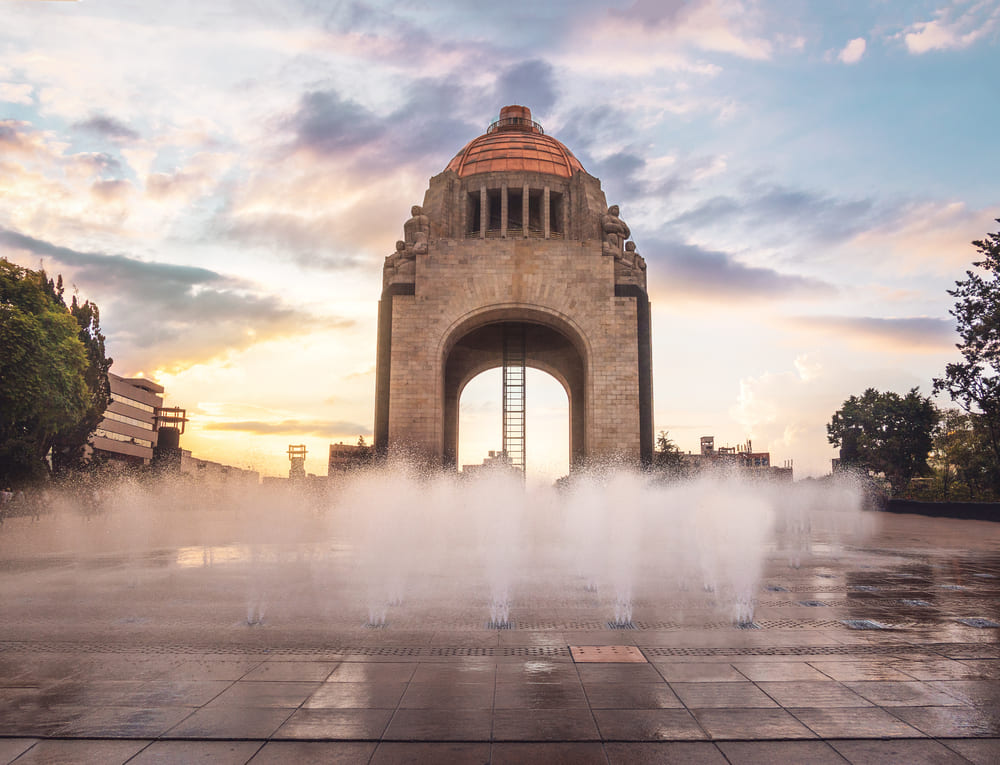- Por Kali Hoteles
- 30 August, 2023
Mexico City is a vibrant and bustling metropolis where the past and present intertwine in a unique way. This cosmopolitan city is not only known for its lively urban activity but also for its rich historical and cultural heritage, which is reflected in its impressive monuments. In this article, I will take you on a tour of the top 10 most visited monuments in Mexico City, which captivate visitors from around the world with their beauty, historical significance, and cultural importance.

- Palace of Fine Arts (Palacio de Bellas Artes):
Our journey begins with an architectural and artistic gem, the Palacio de Bellas Artes. This majestic building combines neoclassical and art nouveau influences and houses a wealth of cultural treasures. In addition to its imposing architecture, the palace is famous for its collection of murals that span from the Mexican Revolution to everyday life, featuring renowned artists like Diego Rivera and Rufino Tamayo. - Angel of Independence
Located on the iconic Paseo de la Reforma, El Ángel de la Independencia is an iconic monument representing the struggle for freedom and independence in Mexico. With its bronze sculpture of the Winged Victory crowning the monument, it’s a symbol of national pride and a gathering place for celebrations and demonstrations. - Templo Mayor (Main Temple)
Delving into the pre-Hispanic roots of the city, we find the Templo Mayor in the heart of the Historic Center. This archaeological site offers a glimpse into ancient Mexico, as it’s the location of the religious and ceremonial center of the ancient city of Tenochtitlán. Here, visitors can marvel at pyramids and sculptures that tell the story of the Aztec civilization. - Zócalo and Catedral Metropolitana (Metropolitan Cathedral)
The Zócalo is the heart of Mexico City, a central square that has witnessed the city’s history for centuries. At its northern end stands the imposing Metropolitan Cathedral, a baroque masterpiece that showcases the influence of European architecture in the region. This cathedral is the seat of the Archdiocese of Mexico and an essential landmark in the country’s religious history. - Monumento a la Revolución (Monument to the Revolution)
This impressive monument pays homage to the Mexican Revolution and is characterized by its colossal dome. Inside, a mausoleum houses the remains of prominent revolutionary leaders. Visitors can ascend the dome to enjoy panoramic views of the city and reflect on the significance of this historical moment. - Chapultepec Castle (Castillo de Chapultepec)
Perched atop a hill in Chapultepec Park, the Castillo de Chapultepec is a historic palace that has served as an imperial and presidential residence. It currently houses the National Museum of History, where visitors can explore lavishly decorated rooms and learn about Mexico’s history. - Monumento a los Niños Héroes (Monument to the Niños Héroes)
Within Chapultepec Park, we find the Monument to the Niños Héroes, commemorating the courage of young cadets who defended Chapultepec Castle during the 1847 American invasion. Its columns and sculptures are a moving reminder of their sacrifice and patriotism. - Basílica de Guadalupe (Basilica of Guadalupe)
Considered one of the most important religious centers in Latin America, the Basilica of Guadalupe is a pilgrimage site for millions of faithful each year. Built in honor of Our Lady of Guadalupe, Mexico’s patron saint, the basilica houses the iconic image of the Virgin imprinted on Juan Diego’s cloak. - Palacio Nacional (National Palace)
Located on the Zócalo, the National Palace is a historic building that houses the president’s offices and has witnessed significant moments in Mexico’s history. Diego Rivera’s murals adorning its walls narrate Mexico’s history from pre-Hispanic times to the Revolution. - Museo Frida Kahlo (Frida Kahlo Museum)
As an icon of Mexican culture and feminism, the Museo Frida Kahlo, also known as the Blue House, is a must-visit. The house where artist Frida Kahlo lived and created offers an intimate look into her life and work, as well as her relationship with Diego Rivera.
These monuments are much more than mere structures; they are a reflection of Mexico’s history and cultural diversity. Through them, visitors can better understand the rich trajectory of Mexico City and how its legacy lives on in every corner of the city.
Now, if you’re wondering where to stay to fully enjoy the rich history that distinguishes Mexico City, your best option will be Kali HotelesThis family of lodging centers located throughout the city center will provide you with all the comfort to make the most of your visit. Moreover, thanks to its excellent location, you’ll be able to move around the city with ease.
So don’t hesitate any longer and book your stay at Kali.
